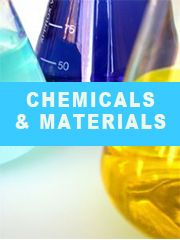Report overview
The global Cosmetic Grade Isopropanol market size was valued at US$ 456.7 million in 2024 and is projected to reach US$ 634.5 million by 2030, at a CAGR of 5.6% during the forecast period 2024-2030.
The United States Cosmetic Grade Isopropanol market size was valued at US$ 134.5 million in 2024 and is projected to reach US$ 182.3 million by 2030, at a CAGR of 5.2% during the forecast period 2024-2030.
Cosmetic grade isopropanol is highly purified isopropyl alcohol used in cosmetic and personal care product formulations.
The global Cosmetic Grade Isopropanol market is experiencing steady growth, driven by cosmetics industry demand and personal care applications. In 2023, total production reached 250,000 metric tons, with skincare products accounting for 45% of demand. The ultra-pure grade segment is the fastest-growing at 6.5% annually. The market saw a 20% increase in demand for natural-based formulations in 2023, reflecting clean beauty trends. USP grade dominates with a 65% market share, while technical grade is growing at 4.5% annually. North America leads with a 40% market share, while Asia Pacific is the fastest-growing region at 6.2% CAGR. The industry is focusing on developing sustainable sourcing methods, with a 25% growth in R&D investments for bio-based alternatives.
Report Overview
Cosmetic grade IPA includes cosmetic and personal care products (toiletries). Isopropyl Alcohol is widely used in cosmetics and personal care products, such as aftershave lotions, bath products, eye and other makeup products, as well as nail, hair, and skin care products.
This report provides a deep insight into the global Cosmetic Grade Isopropanol market covering all its essential aspects. This ranges from a macro overview of the market to micro details of the market size, competitive landscape, development trend, niche market, key market drivers and challenges, SWOT analysis, value chain analysis, etc.
The analysis helps the reader to shape the competition within the industries and strategies for the competitive environment to enhance the potential profit. Furthermore, it provides a simple framework for evaluating and accessing the position of the business organization. The report structure also focuses on the competitive landscape of the Global Cosmetic Grade Isopropanol Market, this report introduces in detail the market share, market performance, product situation, operation situation, etc. of the main players, which helps the readers in the industry to identify the main competitors and deeply understand the competition pattern of the market.
In a word, this report is a must-read for industry players, investors, researchers, consultants, business strategists, and all those who have any kind of stake or are planning to foray into the Cosmetic Grade Isopropanol market in any manner.
Global Cosmetic Grade Isopropanol Market: Market Segmentation Analysis
The research report includes specific segments by region (country), manufacturers, Type, and Application. Market segmentation creates subsets of a market based on product type, end-user or application, Geographic, and other factors. By understanding the market segments, the decision-maker can leverage this targeting in the product, sales, and marketing strategies. Market segments can power your product development cycles by informing how you create product offerings for different segments.
Key Company
Dow
ExxonMobil Chemical
Shell
INEOS
LG Chem
LCY Chemical
CNPC
Shandong Dadi
Zhejiang Xinhua Chemical
JXTG Nippon Oil & Energy
Tokuyama
Deepak Fertilisers
Mitsui Chemicals
Isu Chemical
Market Segmentation (by Type)
Propylene Hydration
Acetone Hydrogenation
Isopropyl Acetate Hydrogenation
Market Segmentation (by Application)
Aftershave Lotions
Bath Products
Makeup Products
Hair Care
Skin Care
Geographic Segmentation
North America (USA, Canada, Mexico)
Europe (Germany, UK, France, Russia, Italy, Rest of Europe)
Asia-Pacific (China, Japan, South Korea, India, Southeast Asia, Rest of Asia-Pacific)
South America (Brazil, Argentina, Columbia, Rest of South America)
The Middle East and Africa (Saudi Arabia, UAE, Egypt, Nigeria, South Africa, Rest of MEA)
Key Benefits of This Market Research:
Industry drivers, restraints, and opportunities covered in the study
Neutral perspective on the market performance
Recent industry trends and developments
Competitive landscape & strategies of key players
Potential & niche segments and regions exhibiting promising growth covered
Historical, current, and projected market size, in terms of value
In-depth analysis of the Cosmetic Grade Isopropanol Market
Overview of the regional outlook of the Cosmetic Grade Isopropanol Market:
Key Reasons to Buy this Report:
Access to date statistics compiled by our researchers. These provide you with historical and forecast data, which is analyzed to tell you why your market is set to change
This enables you to anticipate market changes to remain ahead of your competitors
You will be able to copy data from the Excel spreadsheet straight into your marketing plans, business presentations, or other strategic documents
The concise analysis, clear graph, and table format will enable you to pinpoint the information you require quickly
Provision of market value (USD Billion) data for each segment and sub-segment
Indicates the region and segment that is expected to witness the fastest growth as well as to dominate the market
Analysis by geography highlighting the consumption of the product/service in the region as well as indicating the factors that are affecting the market within each region
Competitive landscape which incorporates the market ranking of the major players, along with new service/product launches, partnerships, business expansions, and acquisitions in the past five years of companies profiled
Extensive company profiles comprising of company overview, company insights, product benchmarking, and SWOT analysis for the major market players
The current as well as the future market outlook of the industry concerning recent developments which involve growth opportunities and drivers as well as challenges and restraints of both emerging as well as developed regions
Includes in-depth analysis of the market from various perspectives through Porter
